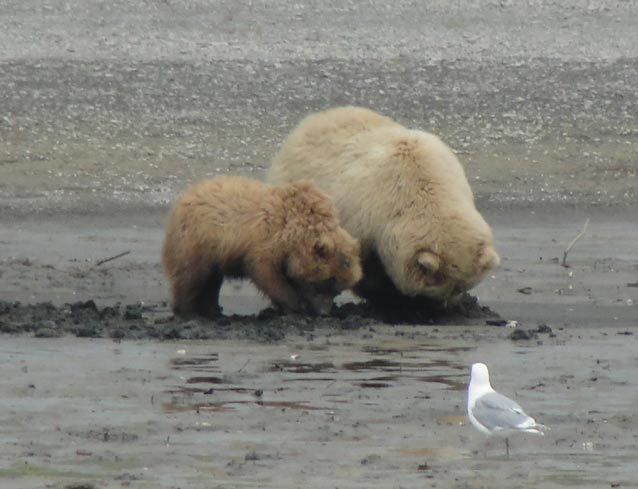
Project Overview
Although remote, the Alaska Peninsula is still vulnerable to natural and human-caused disturbances. These disturbances could affect the amount of food available for brown bears. Large brown bear populations found in the Alaska Peninsula are due in part to abundant coastal food sources: sedges (a grass-like plant found in coastal meadows), clams, mussels, and salmon.
This summer, the National Park Service will begin a collaborative, multi-year study that will examine the relationship between intertidal resources, coastal brown bear behavior, and human influences. Researchers from the National Park Service, the U.S. Geological Survey, Washington State University, and the Alaska SeaLife Center will investigate how vulnerable intertidal food webs are to environmental stressors.
As one of the first steps in this larger project, bears in Katmai National Park and Preserve will be outfitted with temporary GPS collars. Biologists will track their movements between different habitats, and conduct direct observations on these bears to collect data on their foraging behavior. Observations will also be supported by the local knowledge of the staff, operators, and guides on the coast. From this dataset, biologists will be able to analyze bear movement patterns to examine the importance of near-shore food resources in the brown bear diet.
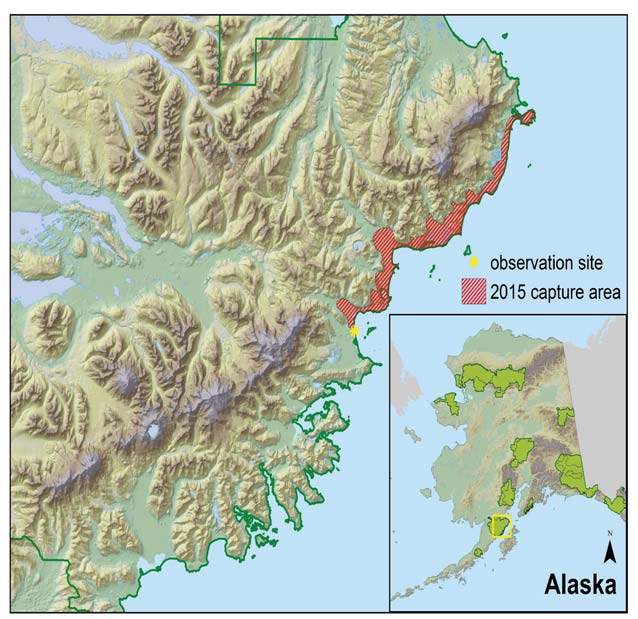
Project Details
National Park Service biologists will temporarily capture 12 female brown bears in mid-May to place a GPS collar on the bears.
Captures will repeated in early July to collect additional samples, and again in early October to remove the GPS collars. Biologists will dedicate a 3 day-window for each capture event, to give them sufficient time to find the bears and locate suitable areas for capture.
Once the bear is immobilized, biologists will:
- place/remove a GPS collar on the bear (May/October)
- weigh the bear
- determine body fat content
- collect hair and blood samples (for diet and genetic analyses, and disease screens)
Each GPS collar comes equipped with a remote mechanism that allows a collar to fall off within 24 hours. If researchers are unable to recapture a collared bear in early October, they will be able to trigger this remote mechanism that ensures the collar will fall off after the study is completed.
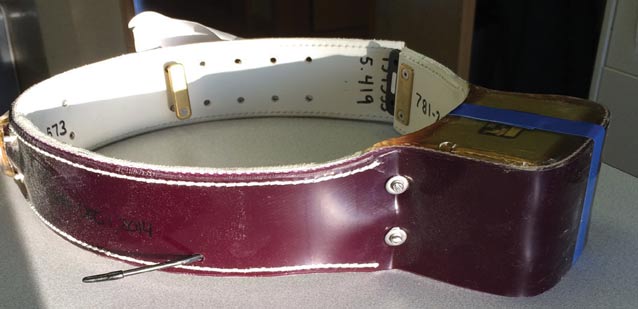
NPS Photo
Between captures, National Park Service and Washington State University staff will be present on the coast to conduct observations of bears foraging in tidal flats, sedges, and streams. This work will investigate the relative effort and caloric return of coastal foraging activities to help determine the importance each food type plays in overall bear health throughout the season.
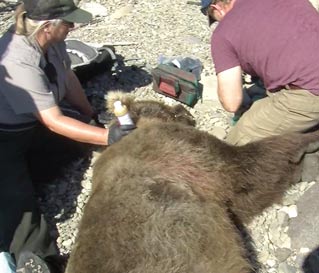
NPS Photo
How Will Bears Be Immobilized?
Researchers use a veterinary drug called Telazol, which takes about 3-10 minutes to take effect. Telazol is both a painkiller and dissociative anesthetic, which prevents the bear from remembering any part of the capture process.
Telazol is widely used in many wildlife studies. It is considered safe and has a wide dose range, which means the chance of overdosing an animal is very low. The lead researcher on this project is experienced and has used this drug with over 800 wild bears.
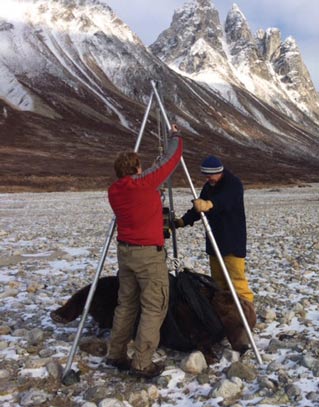
NPS Photo
Before bears are immobilized, researchers will evaluate the landscape for any potential hazards. If researchers determine the terrain is unsafe, they will not capture the bear. They will not capture any females with new spring cubs.
Captures will occur in the uplands ranging from Cape Douglas to Hook Creek at the north end of Hallo Bay. High-use visitor areas will be avoided.
Bears are often lethargic 12 to 24 hours following their recovery. However, National Park Service biologists have not witnessed any adverse effects from the handling events or following captures. Researchers do not expect capture activities to adversely affect the bear viewing experience for park visitors.
Part of a series of articles titled Changing Tides Articles.
Last updated: November 22, 2021
